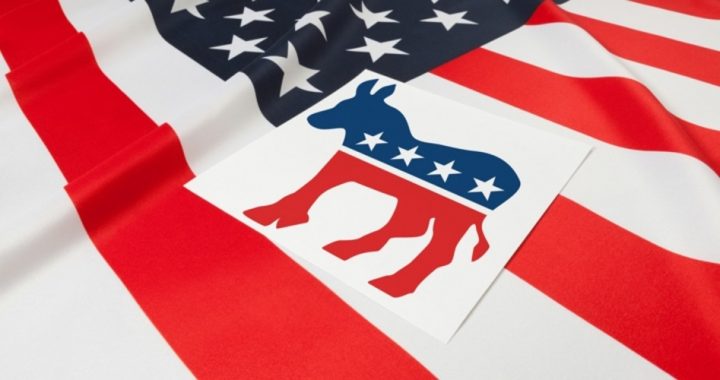
Calling the results for Tuesday’s midterms a possible “mixed verdict,” Jane Hook of the Wall Street Journal wrote on Sunday that the vote is “widely viewed as a referendum on the first two years of Donald Trump’s presidency.” With the president focusing on retaining and possibly expanding the Republican Party’s control of the Senate, all eyes are on the House. For Hook, the results from those 435 races are already in:
Republican officials aiming to hold the party’s 23-seat House advantage have ceded seven GOP-held districts to the Democrats, spending no money on TV to defend them. Nine more GOP-held House seats in suburban areas are already lost, party officials said.
That means Democrats must win seven of about three dozen tossup districts to regain control of the House.
Doing the math, Hook makes the case that it’s all but over: With 39 seats in the “tossup” category at RealClearPolitics.com, and the Democrats needing only seven to clinch a majority in the House, there’s no pathway forward for the Republicans to keep control.
On the surface, ABC News agrees: “It’s Democrats +8 in Likely Voter Preference,” based on its final poll before the midterms. It’s “Trump’s unpopularity and a broad gap in trust to handle health care [that] are keeping Democrats in the hunt to take control of [the House]” adding an important caveat: “but with an advantage that’s narrowed from its summertime peak.” In its generic House polling, the ABC News/Washington Post poll showed the Democrats with a 14-point advantage in August and a 13-point advantage in September. That advantage is now down to just eight points. Note: That “final” poll was taken last week, not reflecting Trump’s last-minute campaign blitz (he’s holding three rallies on Monday in Ohio, Indiana, and Missouri), and not reflecting the ever-expanding “caravan crisis” that Democrats are virtually handing to Trump on a silver platter.
The poll that was conducted by Langer Research Associates for ABC and the Washington Post contained this warning: “The Democratic lead in this poll … in no way makes the election outcome a done deal.”
Julie Kelly, writing for the conservative Center for American Greatness, said the reason was border security:
Amazingly, the pollsters admit that it’s the first time they’ve asked about border security, and 59 percent of [the 1,255 adults they polled which included 1,041 registered voters] said it was an important issue in the election. Eighty-four percent of Republicans and 47 percent of Democrats ranked border security as a key issue [while] independents were evenly split.
Republicans [in the poll] have a ten-point lead over Democrats on the question of who will better handle border security, and a 19-point lead among independents.
What about those “toss-up” seats? Kelly weighed in:
On Tuesday all eyes will be on the more than two dozen toss-up House races. It’s here where Democrats don’t appear to have the strong advantage they need to win several of these contests that will take them over the top. The poll shows a slim preference for Democrats — 49-44 percent — in these toss-up districts; considering the margin of error in the poll (3.5 percent), [they’re] essentially a tie.
What about “bias” in polls done for left-wing media outlets such as ABC and the Washington Post? Kelly makes the point: “The eight-point gap [not only] represents a five-point drop from the same poll [taken] just three weeks ago [but] like most polls, the sample favors Democrats by six points among registered voters.”
If that is so, then the results just in from Rasmussen Reports make much more sense. On Monday morning, its Daily Presidential Tracking Poll showed 50 percent of those polled approving of the president’s job performance with 49 percent disapproving. It also reported in its Generic Congressional Ballot that it:
shows Republicans edging ahead by one point, but in essence, the two parties are tied. The survey has a +/-2 percentage point margin of error.
The latest Rasmussen Reports national telephone and online survey of Likely U.S. Voters finds that 46% would choose the Republican candidate if the elections for Congress were held today. Forty-five percent (45%) would vote for the Democrat.
The Rasmussen poll was twice as large as the ABC/Washington Post poll (2,500 versus 1,255), and it polled only those who told them they were likely to vote on Tuesday. Said Rasmussen: “The margin of sampling error is +/- 2 percentage points with a 95% level of confidence.” Statisticians delight in informing the average reader that what a “95% percent level of confidence” is saying is that if the poll or survey were repeated over and over again, the results would match the results from the actual population 95 percent of the time.
Tuesday’s results won’t likely be known until early Wednesday morning, and they could easily contain some nasty surprises for Democrats who are already rehearsing their impeachment speeches for the next Congress.
Image: Niyazz via iStock / Getty Images Plus
An Ivy League graduate and former investment advisor, Bob is a regular contributor to The New American magazine and blogs frequently at LightFromTheRight.com, primarily on economics and politics. He can be reached at [email protected]



